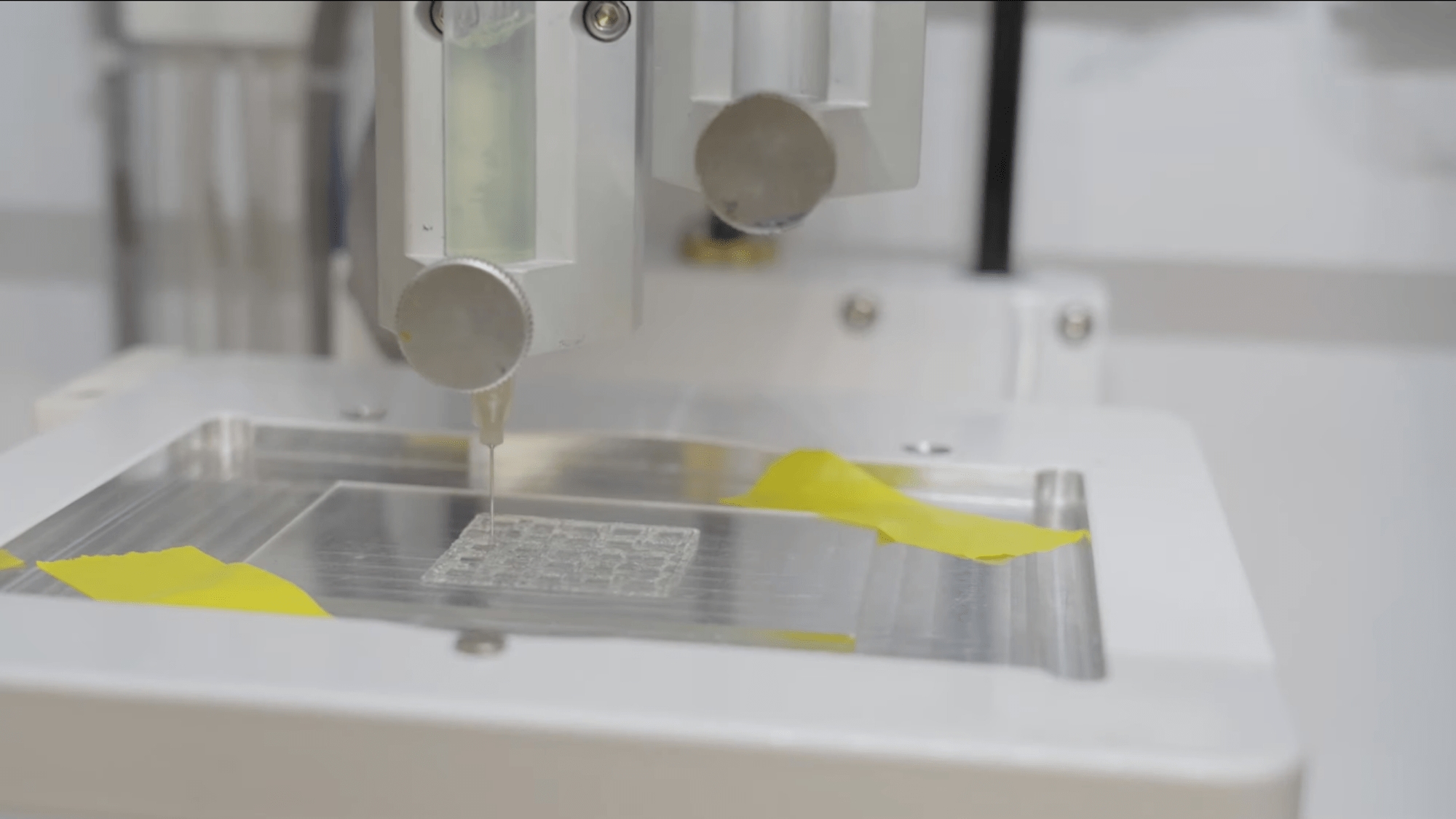

Decontaminating water is as vital an endeavor as ever as pollution issues continue to flood the planet. Knowing this, researchers at the University of California San Diego just created the latest mind-bending tool to aid in future clean-up projects: a 3D-printed “engineered living material” made of seaweed polymers and genetically altered bacteria that breaks down organic pollutants in water.
As detailed via a new paper published in Nature Communications, the remarkable creation comes courtesy of a team working within the University of California San Diego’s Materials Research Science and Engineering Center (MRSEC). According to the project announcement, the team first hydrated a seaweed-derived polymer known as alginate. Meanwhile, the researchers genetically engineered a waterborne, photosynthetic bacteria called cyanobacteria to produce laccase, an enzyme capable of neutralizing organic pollutants like antibiotics, dyes, pharmaceutical drugs, and BPAs. The ingredients were then combined and passed through a 3D printer to produce a grid-like design whose surface area-to-volume ratio allowed the bacteria optimal access to light, gasses, and nutrients.
[Related: The US might finally regulate toxic ‘forever chemicals’ in drinking water.]
“This collaboration allowed us to apply our knowledge of the genetics and physiology of cyanobacteria to create a living material,” School of Biological Sciences faculty member Susan Golden said in a statement. “Now we can think creatively about engineering novel functions into cyanobacteria to make more useful products.”
To test their creation, the engineers introduced their decontaminator to water polluted by indigo carmine, a blue dye often used within denim textile manufacturing. The team’s grid-like, living tool managed to safely and effectively decolorize the water solution over the course of multiple days.

However, that still leaves the alginate-cyanobacteria mixture within the water. Replacing one foreign pollutant with foreign, synthesized bacteria doesn’t necessarily solve the larger problem of contamination. To solve this, the UC San Diego team further engineered their version of cyanobacteria to adversely respond to theophylline, a molecule similar to caffeine found in many teas and chocolates. Whenever the decontamination substance comes into contact with the molecule, the bacteria subsequently produces a specific protein to break down and destroy its own cells, thus getting rid of the substance.
“The living material can act on the pollutant of interest, then a small molecule can be added afterwards to kill the [cyanobacteria],” Jon Pokorski, a professor of nanoengineering and research co-lead, said in the announcement. “This way, we can alleviate any concerns about having genetically modified bacteria lingering in the environment.”
As useful as this living filer could already be in decontamination projects, the team hopes to eventually take their substance a step further by designing it to self-destruct without the need for additional outside chemicals.
“Our goal is to make materials that respond to stimuli that are already present in the environment,” Pokorski explained.
